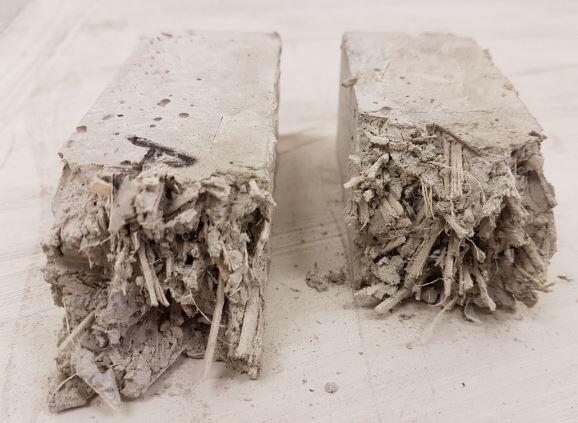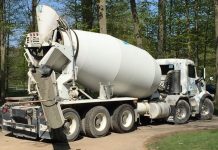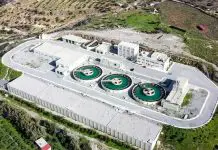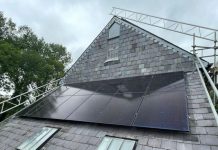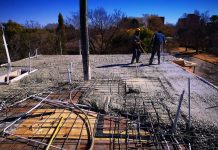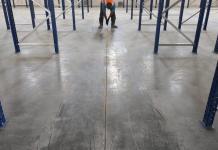Hemp and Recycled Aggregates Concrete (HRAC) is a sustainable concrete where coarse aggregates are partially replaced with industrial hemp fibers and recycled concrete aggregates (RCA) [1]. In the bid to achieve sustainable materials in construction and also reduce the carbon footprint and environmental impacts of concrete, researchers have been coming up with various ways to beneficially reuse industrial and agricultural wastes as construction materials.
According to researchers from the Department of Civil and Environmental Engineering, American University of Beirut, Lebanon, the use of HRAC in construction has two main benefits which are; savings on natural resources, and reuse/recycling of waste materials [1].
Hemp fiber is a natural material that has been used extensively in producing a lot of things such as rope, clothing, shoes, accessories, etc. It has also been used with other materials to produce plastics and composites for the automobile industry, and also in the production of bricks and mortars in building construction [2]. Hemp fiber has also been used in the production of fibreboard, thermal insulation in homes, and hempcrete. As a matter of fact, hemp fibers are regarded as one of the toughest natural fibers [3].
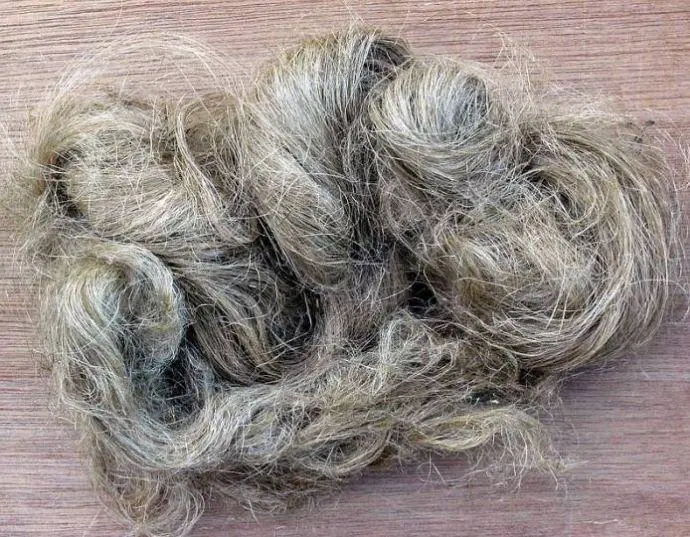
Recycled concrete aggregate (RCA) is obtained by breaking the lumps of old or demolished concrete works and extracting the coarse aggregates. One of the major reasons to use RCA in structural concrete is to have more environmentally friendly construction [4]. The use of RCA on a large scale may help to reduce the effects of the construction on the environment by reusing waste materials and preventing more natural resources from being harvested.
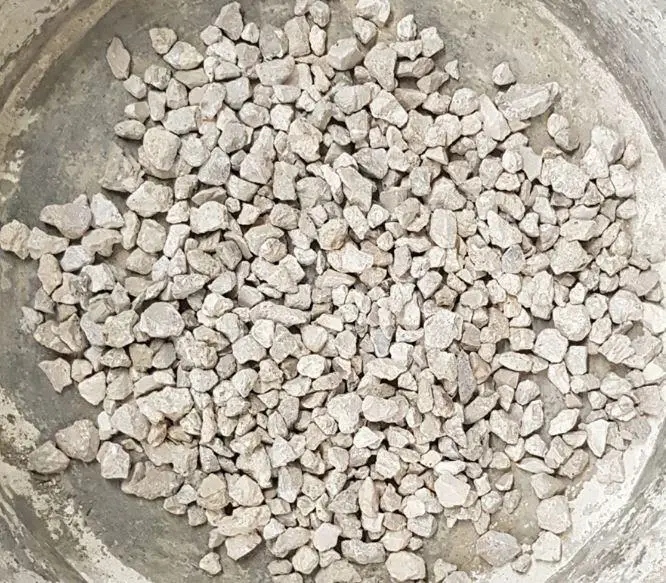
Some scholars have researched the use of hemp fiber in the production of concrete. A 2008 study in France showed that treating hemp fiber in alkaline improved the fiber strength and the fiber-matrix adhesion in concrete [5]. Another study by [6] showed that the strength of hemp fibers can be improved with low lignin content and good fiber separation when treated in 10% (by weight) NaOH (Sodium hydroxide) solution. The hemp fibers were observed to have an average tensile strength of 857 MPa and Young’s modulus of 58 GPa.
Li et al [7] carried out a study to determine the properties of hemp fibre reinforced concrete. The study showed that the addition of hemp fibre into the concrete matrix results in a linear reduction in the specific gravity and the water absorption ratio of the matrix. Furthermore, the compressive strength, flexural strength, toughness and toughness indices, specific gravity, and water absorption ratio of hemp fibre reinforced concrete are all correlated with aggregate size parameters, fibre factors and matrix initial mechanical properties.
A 2014 study by [8] showed that hemp fiber has no negative effect on the strength of the concrete in the long term.
Previous researches done on the strength of concrete produced with recycled concrete aggregate showed minor reductions in the various mechanical properties including compressive strength, splitting tensile strength, flexural strength, and modulus of elasticity. According to [4], the density of RCA is lesser than the density of natural aggregates due to residual adhered mortar. A study by [9] showed that the relative density of RCA (in the saturated surface dry condition) is approximately 7–9 % lower than that of natural aggregate.
Research has shown that the natural aggregate in a concrete mix may need to be replaced with about 25-30% of RCA before significant changes can occur in the compressive strength [4]. A 2008 study attributed the reduction in compressive strength of RCA to water higher water adsorption when compared with natural aggregates [10].
In a 2020 study of HRAC by [11], the coarse aggregate content was reduced by 20% of the concrete volume, and 50% of the natural coarse aggregates were replaced by recycled concrete aggregates. The variables of the study included percentage replacement of natural aggregates with RCA (0 or 50%), maximum size aggregate (10 and 20 mm), hemp fiber length (20 and 30 mm), and fiber surface treatment (alkali, silane, and acetyl).
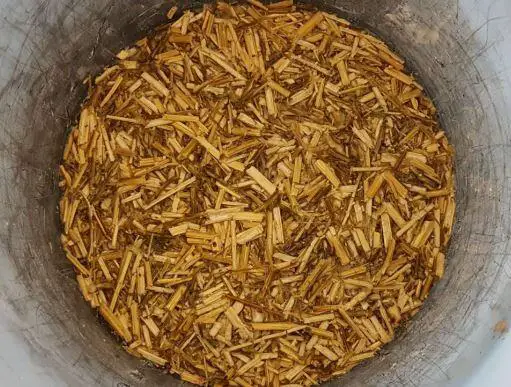
From the study, the replacement of 50% of natural aggregate with RCA reduced the tested mechanical properties by 1 to 10% when the maximum size of aggregate was 10 mm and by 4 to 13% when maximum size of aggregate was 20 mm. When fibers were incorporated in the mix and the coarse aggregate content was reduced by 20%, the compressive strength of the concrete reduced by 37% for maximum size aggregate of 10 mm relative to the control mix.
For maximum size aggregate of 20mm, compressive strength reduced by 31.1% relative to the control mix. The study recommended that HRAC mixes should not be used in members subjected to direct compression such as columns.
Other mechanical properties such as modulus of elasticity, modulus of rupture, and splitting tensile strength and long term/durability test results from the study can be obtained from the open access article.
References
[1] Ghosn S., Hamad B. (2020): Durability Evaluation of Hemp Fibers and Recycled Aggregates Concrete. In Proceedings to the XV International Conference on Durability of Building Materials and Components DBMC 2020, Barcelona
[2] https://en.wikipedia.org/wiki/Hemp#Fiber (Assessed on the 5th of December, 2020)
[3] https://hempgazette.com/industrial-hemp/hemp-fiber-production/ (Assessed on the 5th of December, 2020)
[4] McNeil, K., Kang, T.HK (2013): Recycled Concrete Aggregates: A Review. Int J Concr Struct Mater 7, 61–69. https://doi.org/10.1007/s40069-013-0032-5
[5] Sedan, D., Pagnoux, C., Smith, A., & Chotard, T. (2008). Mechanical properties of hemp fibre reinforced cement: influence of the fibre/matrix interaction. Journal of the European Ceramic Society, 28(1), 183–192.
[6] Pickering, K. L., Beckermann, G. W., Alam, S. N., & Foreman, N. J. (2007). Optimising industrial hemp fibre for composites. Composites Part A—Applied Science and Manufacturing, 38(2), 461–468.
[7] Li, Z., Wang, X., & Wang, L. (2006). Properties of hemp fibre reinforced concrete composites, Composites: Part A Applied Science and Manufacturing, 37(3), 497–505.
[8] Awwad, E., Mabsout, M., Hamad, B., Farran, M.T. and Khatib, H. (2012): Studies on fiber-reinforced concrete using industrial hemp fibers. Construction and Building Materials, 35, 710-717
[9] Limbachiya, M. C., Leelawat, T., & Dhir, R. K. (2000): Use of recycled concrete aggregate in high-strength concrete. Materials and Structures, 33, 574–580
[10] Yang, K.-H., Chung, H.-S., & Ashour, A. F. (2008): Influence of type and replacement level of recycled aggregates on concrete properties. ACI Materials Journal, 105(3), 289–296.
[11] Ghosn, S., Cherkawi, N. & Hamad, B. (2010): Studies on Hemp and Recycled Aggregate Concrete. Int J Concr Struct Mater 14, 54 (2020). https://doi.org/10.1186/s40069-020-00429-6
[12] Novakova P., Sal J. (2019): Use of technical hemp for concrete – Hempcrete. IOP Conf. Series: Materials Science and Engineering 603 (2019) 052095 doi:10.1088/1757-899X/603/5/052095
Featured Image Credit: Novakova P., Sal J. (2019): Use of technical hemp for concrete – Hempcrete. IOP Conf. Series: Materials Science and Engineering 603 (2019) 052095 doi:10.1088/1757-899X/603/5/052095

